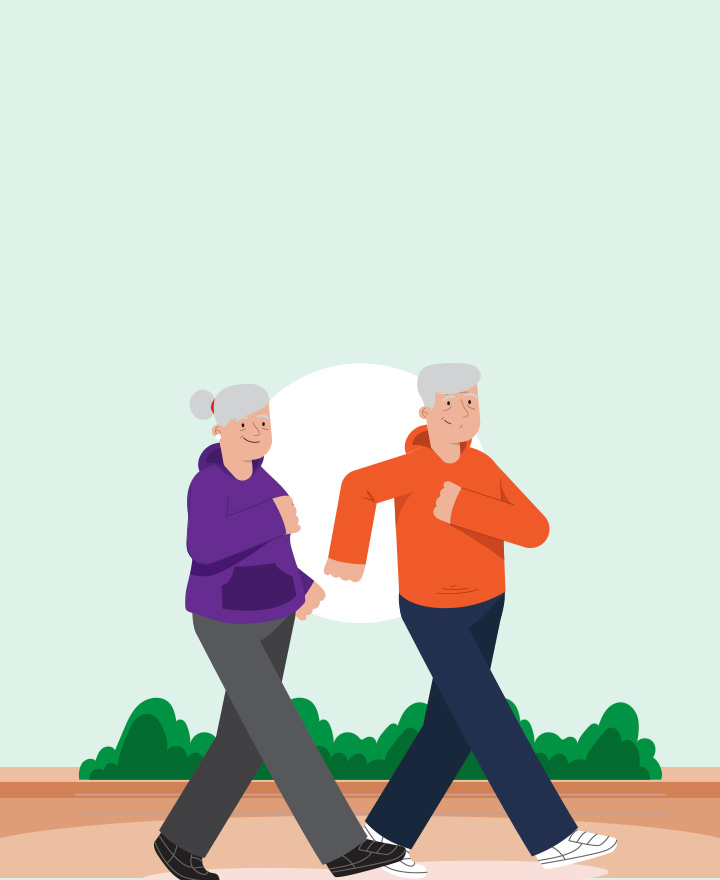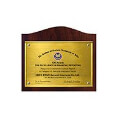

Walking is the Best Exercise for Elderly
Staying active is important for everyone, but that is especially true for the elderly. They are at a higher risk for developing health complications, but the risk can be reduced by quitting the sedentary lifestyle. It can be difficult to find an exercise accessible enough to not aggravate current health problems.
One of the best exercises for elderly is walking. It's accessible and very low-impact, and it's one of the most effective forms of exercise for those with heart problems, arthritis, or diabetes.
Key reasons why walking is the best exercise for the elderly:
● Walking is easy, even for those who are elderly or have mobility issues
● It is a great cardiovascular workout that can reduce the risk of heart disease and stroke
● It strengthens bones and muscles and improves balance and coordination.
● Walking regularly can help manage diabetes
● Helps strengthen your immune system and reduce your chance of getting sick
● Helps maintain a healthy weight, which will keep you from needing assistance in activities of daily living
● Boosts memory and cognitive ability in elderly people
What are the Benefits of Walking for the Elderly?
Walking has many benefits for the elderly. It helps with cardiovascular health and bone density, and it can improve your mood and mental health. With that in mind, it helps you maintain your independence and can even allow you to age more gracefully. Let us discuss the benefits of walking for the elderly in detail.
• A Safe, Effective Way to Build a Stronger Body
A safe and effective way to get in shape is to gradually add more walking into your day and spend less time sitting. This builds strong foundations for your body and helps you increase overall fitness. Keeping the intensity of your workout low with walking is a great way to build your fitness without hurting yourself. These small steps can make all the difference over time.
• Strong Bones, Improved Mobility, and Less Pain
Walking is important for preventing the loss of bone mass, which can be caused by arthritis or osteoporosis. Moreover, it has the power to strengthen muscles, increase mobility, and alleviate pain and pressure on the joints. Consistency should be the key for all fitness endeavours.
• If you want to lose weight, start walking!
Whether you're in search of a weight-loss solution or a healthy way to maintain your body weight, walking might be the perfect fit for you. When it comes to shedding calories, you can burn just as many only by walking. It is one of the best ways to keep your weight in check, and it’s safer and less stressful on the joints than running and other forms of exercise.
• Boost Cardiovascular Health
When it comes to cardiovascular health, the most important thing you can do is be active! Older adults are at a higher risk of cardiovascular issues, which can lead to diabetes, strokes, and heart disease. In order to keep your heart healthy, you should work up a sweat for 30 minutes each day by going for a walk. This will improve circulation and lower blood sugar levels, meaning you have a lower risk of diabetes, a stroke, or a cardiac arrest.
• Get Better Sleep
One of the common problems faced by the elderly is lack of sleep. A brisk walk can help you get better quality of sleep. Breathing in the fresh air will stimulate your body, mind, and clear your head to prepare for sleep. So, if you struggle with insomnia or a lack of sleep, there's no better reason to go for a walk.
How to Get Started as a Beginner
Some ways to get more walking into your life won't cost you a dime. Just walk! Even if it's just a few minutes every day, it'll make all the difference in your health and fitness. Here are a few tips for getting more walking into your life:
1. Take a longer walking route to the grocery store.
2. Walk (rather than drive) to visit a nearby friend.
3. Take the stairs instead of the elevator.
4. Go on regular walks in nature and around the town.
5. Walking your dog is just one way to incorporate more walking into your daily life.
Conclusion
We know that people who walk without help are more likely to live independently. Active older adults are more likely to walk without help and do things on their own around the house. It is possible to keep up the same pace for a longer period. Perhaps you could walk in shorter, more frequent bursts, or go up and down the stairs. All are effective ways to get you moving.
Disclaimer: This blog provides general information and discussions about health and related subjects. The information and other content provided in this blog, website or in any linked materials are not intended and should not be considered, or used as a substitute for, medical advice, diagnosis or treatment. Kindly contact your Doctor before starting a new medicine or health regime.
Related Articles
7 Must Do Exercises for Seniors
You Are Never Too Old To Exercise
How to Remain Healthy as You Age - Tips for a Healthy Lifestyle
Published on May 02, 2022
























 Health Insurance
Health Insurance  Travel Insurance
Travel Insurance  Car Insurance
Car Insurance  Cyber Insurance
Cyber Insurance  Critical Illness Insurance
Critical Illness Insurance
 Pet Insurance
Pet Insurance
 Bike/Two Wheeler Insurance
Bike/Two Wheeler Insurance  Home Insurance
Home Insurance  Third Party Vehicle Ins.
Third Party Vehicle Ins.  Tractor Insurance
Tractor Insurance  Goods Carrying Vehicle Ins.
Goods Carrying Vehicle Ins.  Passenger Carrying Vehicle Ins.
Passenger Carrying Vehicle Ins.  Compulsory Personal Accident Insurance
Compulsory Personal Accident Insurance  Travel Insurance
Travel Insurance  Rural
Rural